Pleurotus dryinus – Veiled Oyster
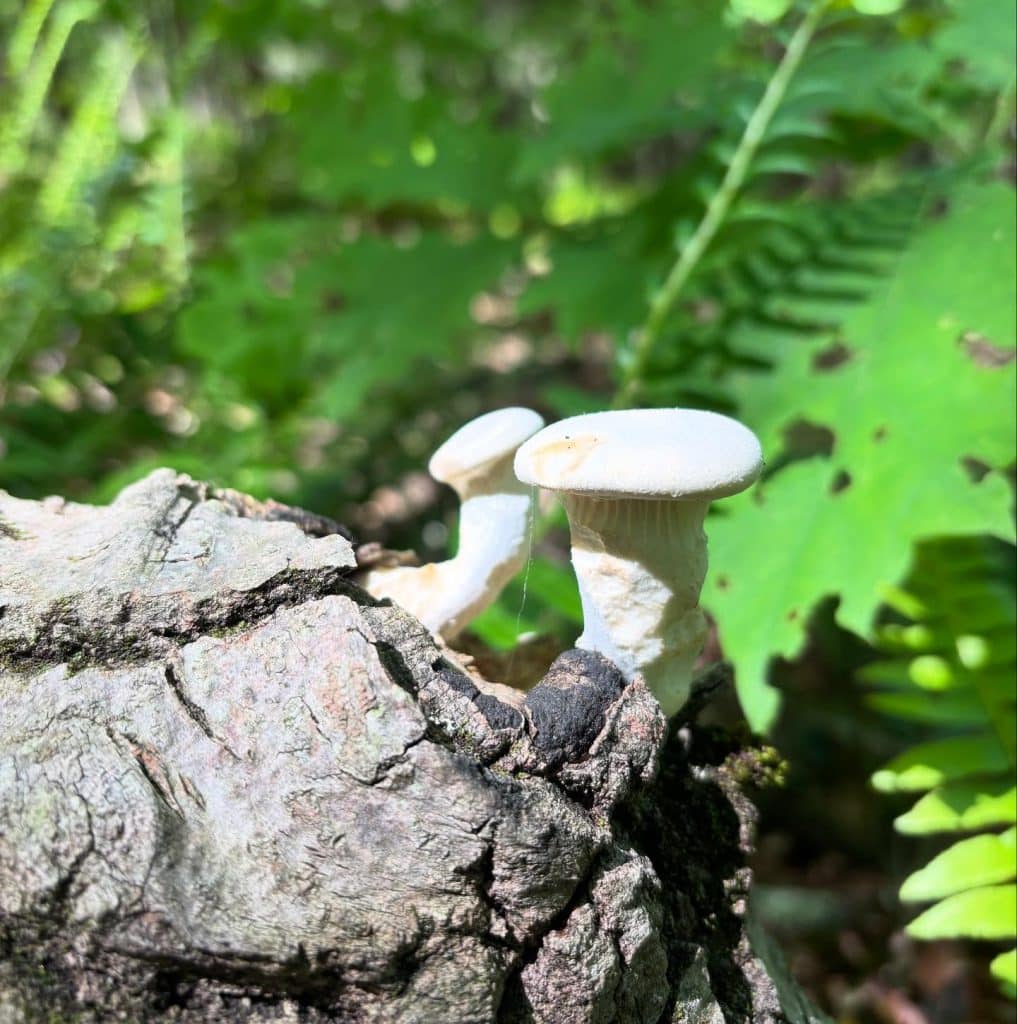
The veiled oyster (Pleurotus dryinus) is an edible oyster mushroom that can be found throughout North America. It fruits spring-fall in New England. It is most often found growing as a decomposer on dead and dying oak and beech trees but can also grow on other hardwoods. The mushroom can grow singularly or in small […]
Sedum sarmentosum – Stringy stonecrop

Stringy stonecrop (Sedum sarmentosum) is an introduced perennial with edible leaves. It can be found in sunny areas with sandy soil. The plant can spread quickly, forming a mat on the ground. The fleshy leaves are arranged in whorls of three. Yellow star-shaped flowers are produced in the summer. The plant is edible raw or […]
Cercis canadensis – Eastern Redbud
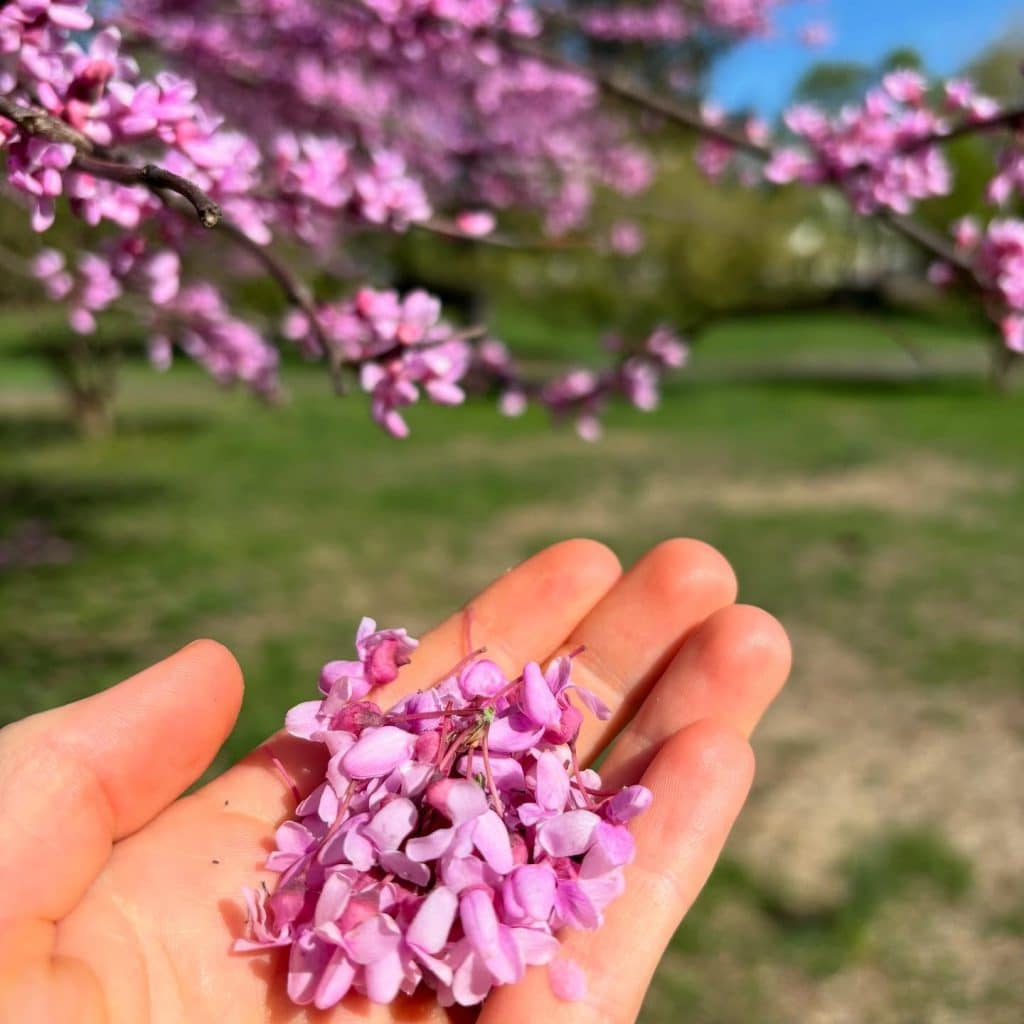
Eastern redbud (Cercis canadensis) is a tree native to southwestern CT that produces edible flowers in mid-spring. Eastern redbud can be found in mixed woodlands or cultivated areas. Pink flowers appear in spring before the leaves emerge. Leaves are alternate and heart shaped. Flowers become pods in later spring. Redbud blossoms taste like sweet peas […]
Picea glauca – White Spruce
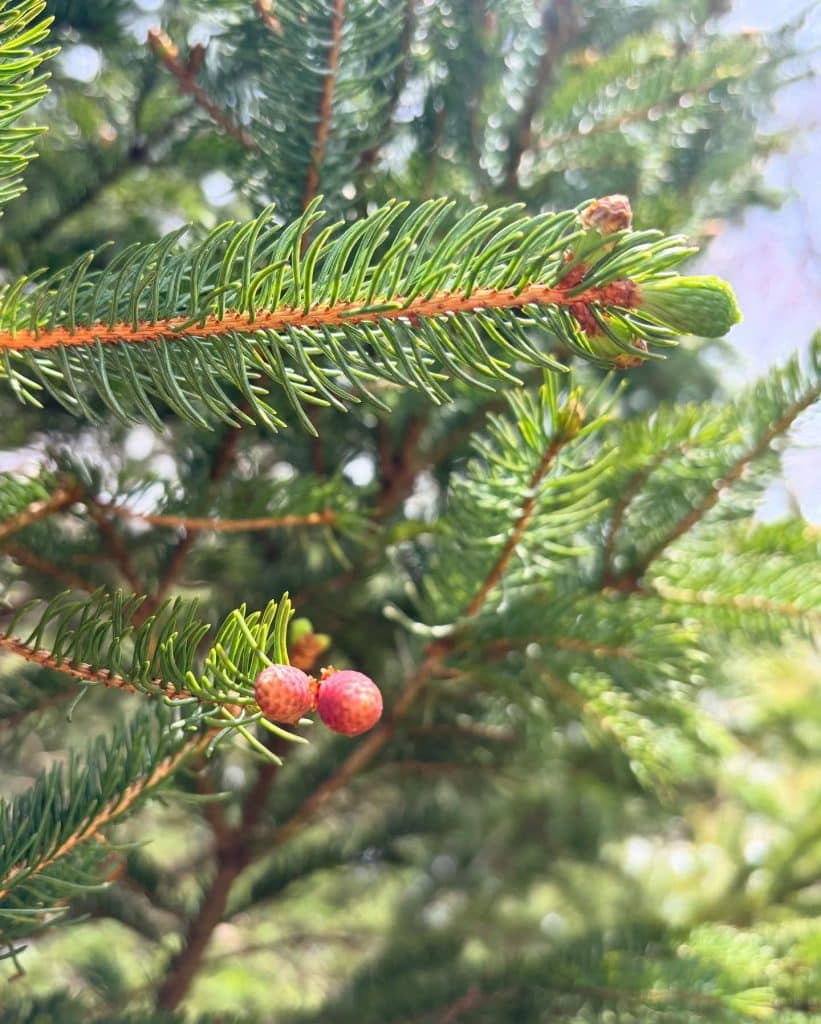
White spruce (Picea glauca) is a native evergreen that produces edible needles and cones. White spruce can be found in sunny areas with rich, well-drained soil. All spruce trees are non-toxic. Spruces are identified by their needles that are sharp and have four sides. Each needle is individually attached to the branch. Needles attach […]
Symplocarpus foetidus – Skunk Cabbage

Skunk cabbage (Symplocarpus foetidus) is one of the first plants to appear in early spring. It is found in swamps and marshlands. Skunk cabbage starts off as a greenish or reddish leathery bract that holds circular flowers. Tightly coiled leaves appear in a week or two. Cutting or bruising the leaves cause a skunky smell. […]
Asparagus officinalis – Wild Asparagus
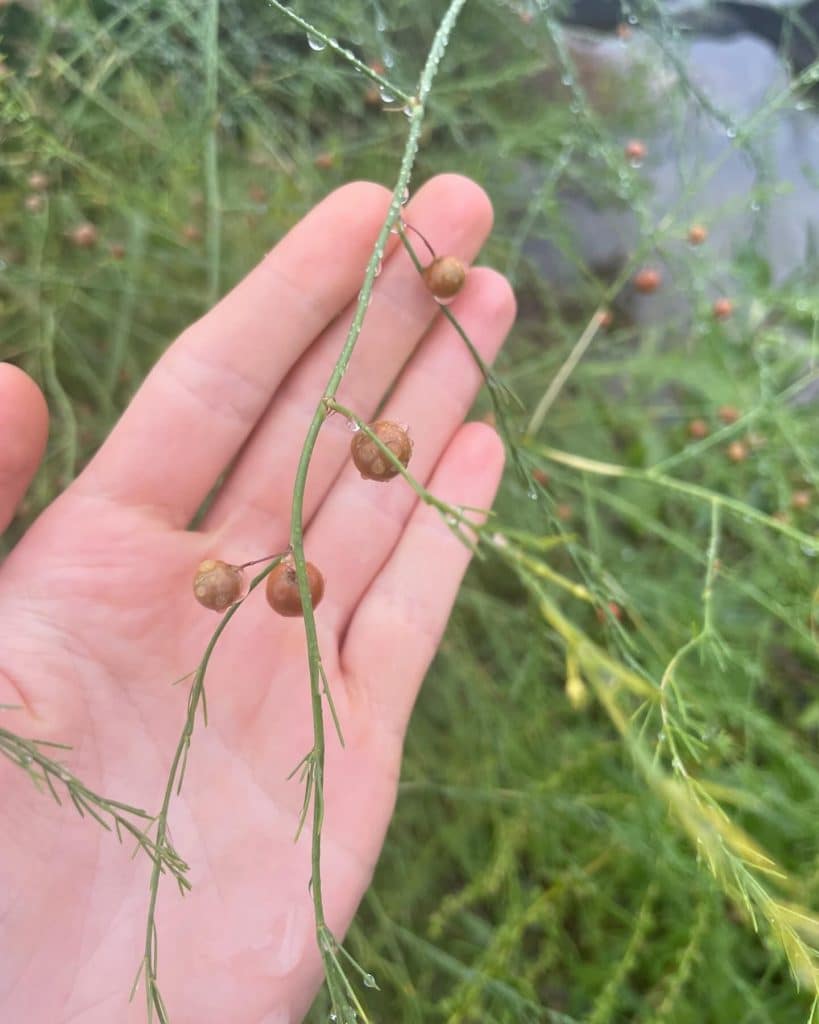
Wild Asparagus (Asparagus officinalis) is the same species as cultivated asparagus. The plant has escaped cultivation and can now be found growing in riverbanks and seashores that receive full to partial sun. Being a perennial, the plant will re-grow in the same spot year after year. Shoots that look like store-bought asparagus appear in early […]
Trifolium pratense – Red Clover
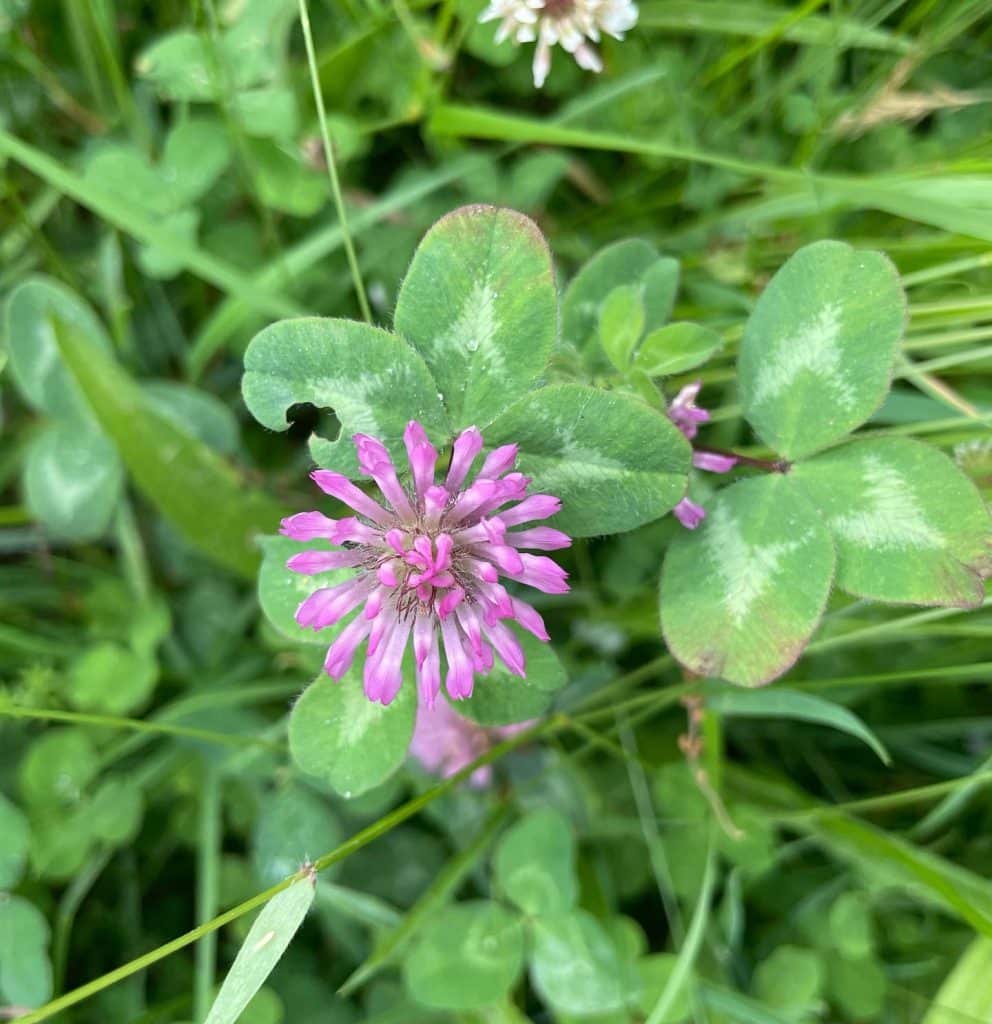
Red clover (Trifolium pratense) is an introduced perennial legume. Red clover can be found in lawns and meadows with partial to full sun. It can grow in low nitrogen and poorly drained soil. Being a legume, it can fix nitrogen in the soil for use by other plants. Red clover leaves consist of three […]
Lunaria annua – Annual Honesty
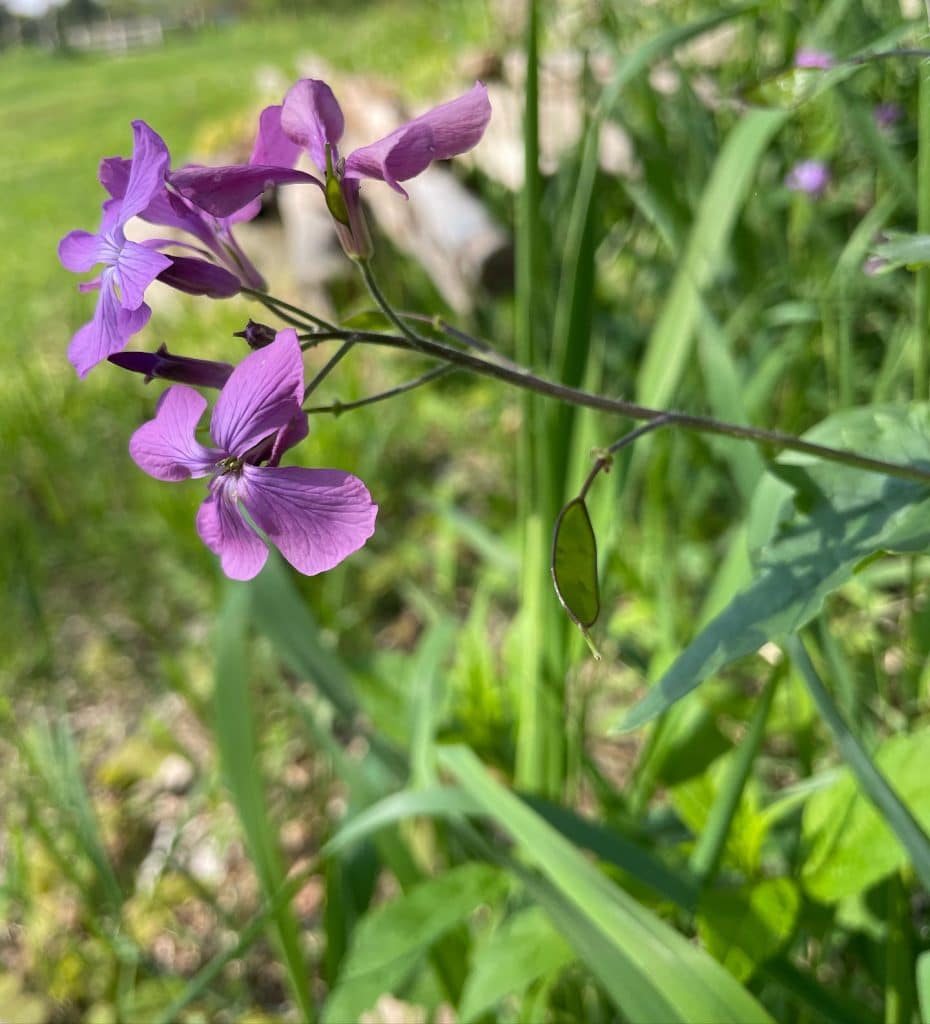
Annual honesty (Lunaria annua) is a non-native biennial that can be found in cultivated gardens and as an escapee in woodlands and waste places. Annual honesty, also known as the “money plant”, has finely hairy, heart-shaped leaves with toothed edges. The flowers have four petals in a cross shape. They are usually purple but can […]
Wisteria spp. – Wisteria
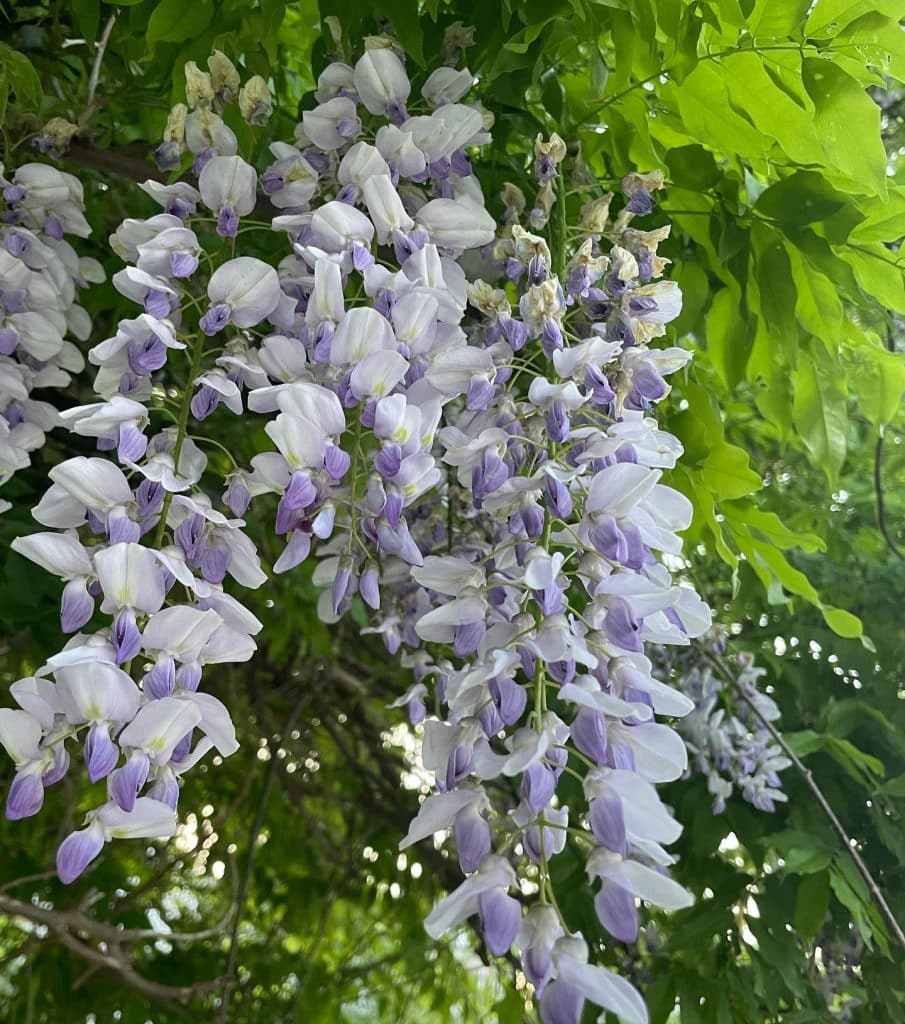
Wisteria (Wisteria spp.) is a genus of flowering vines in the legume family. There are both native (American wisteria) and invasive (Chinese and Japanese wisteria) species of wisteria that can be found in CT. All wisteria flowers are edible and can be used interchangeably in recipes. Wisteria can be found in areas that receive […]
Allium tricoccum – Ramps

Ramps (Allium tricoccum) are a native species of onion that can be found late March- early May in CT. Ramps can be found in woodlands with rich, moist, well-drained soil. They usually grow under trees but get full sun since the leaves are not yet out. Ramps have 1-3 leaves that attach to a white […]
Matteuccia struthiopteris – Ostrich Fern
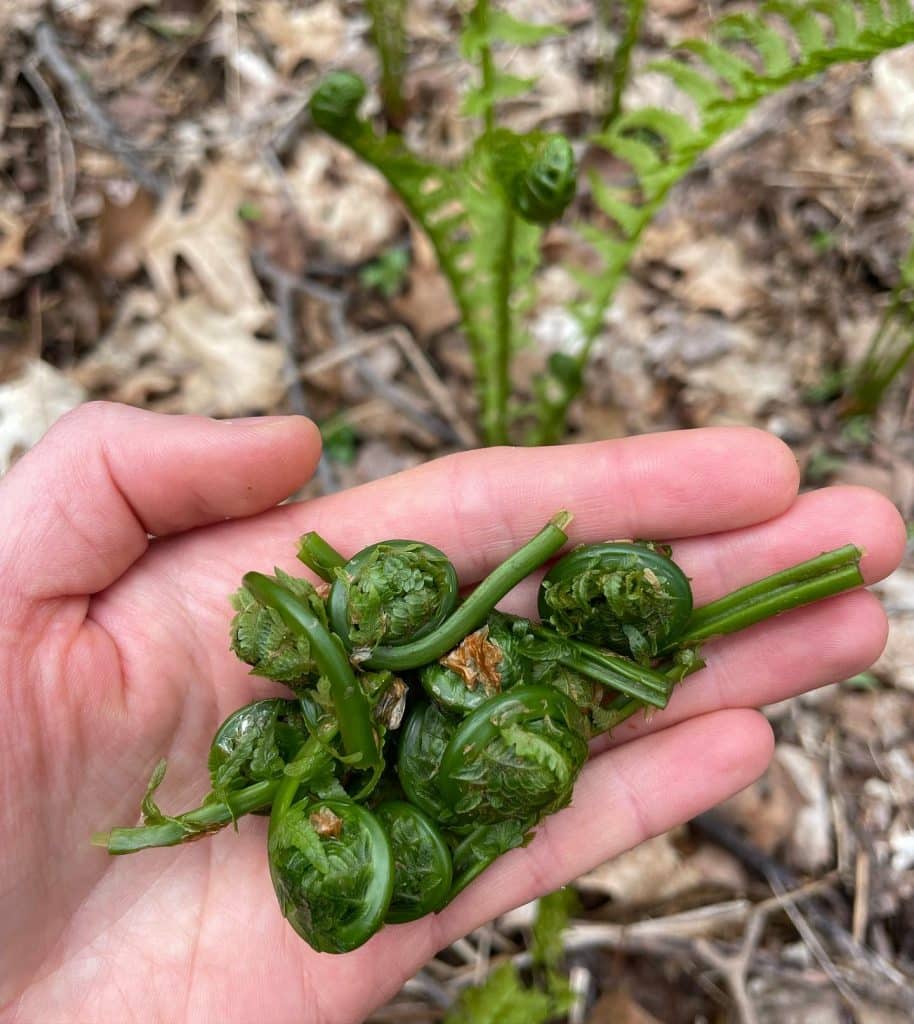
The Ostrich fern (Matteuccia struthiopteris) is the only fern in CT that produces edible fiddleheads in the spring. The fiddlehead is the immature, furled frond of a fern. Ostrich ferns can be found in rich, disturbed soil. Check near water sources with wet, sandy soil. They are most common in river floodplains. Ostrich ferns can […]
Reynoutria japonica – Japanese Knotweed
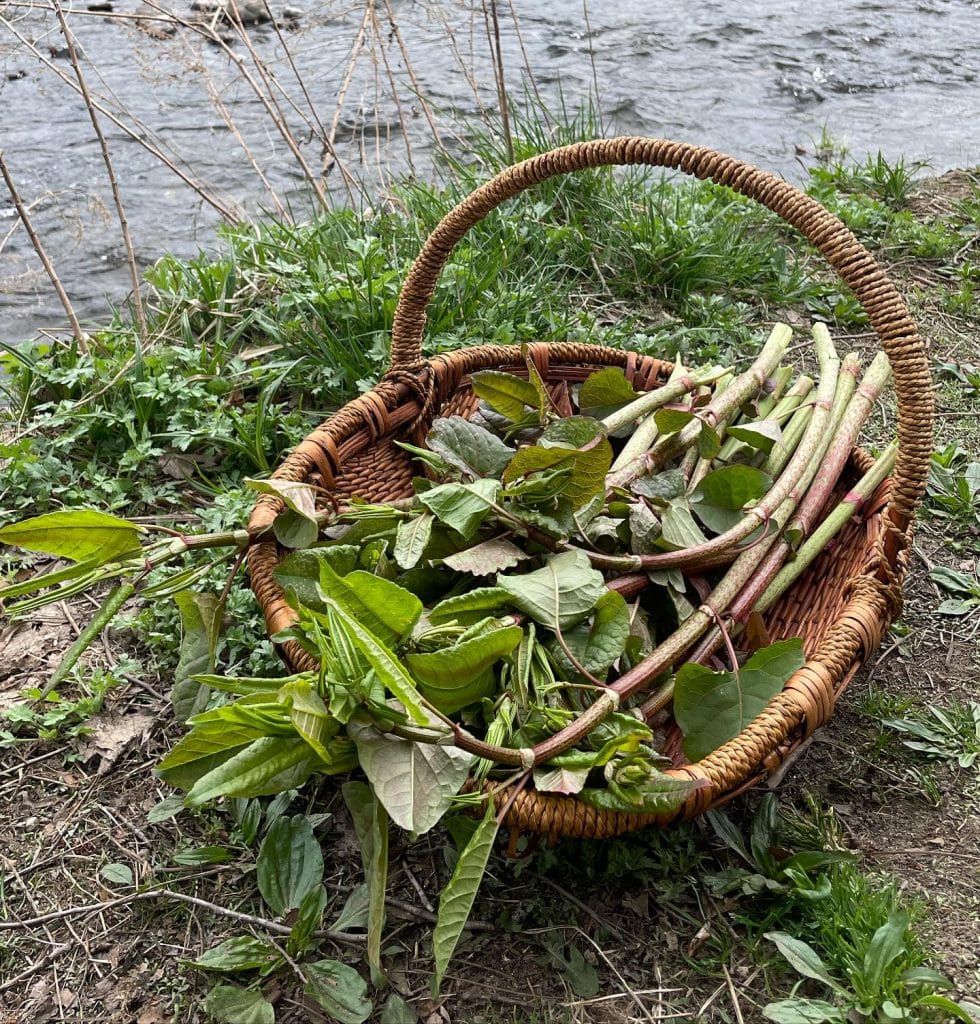
Japanese knotweed (Reynoutria japonica) is an invasive perennial that was brought to the U.S. from Asia as an ornamental. Japanese knotweed can be found in moist areas that receive sunlight. It often grows in large thickets in disturbed areas. It can grow up to 15 feet tall and its root system can reach 20 feet […]
Alliaria petiolata – Garlic Mustard

Garlic mustard (Alliaria petiolata) is an edible invasive plant in the mustard family. Garlic mustard can be found in human-disturbed areas, shaded field edges, and woodlands. It has the ability to take over woodlands and kill off 90% of all other herbaceous plants. Garlic mustard has no native predators and seeds can last up to […]
Barbarea vulgaris – Wintercress
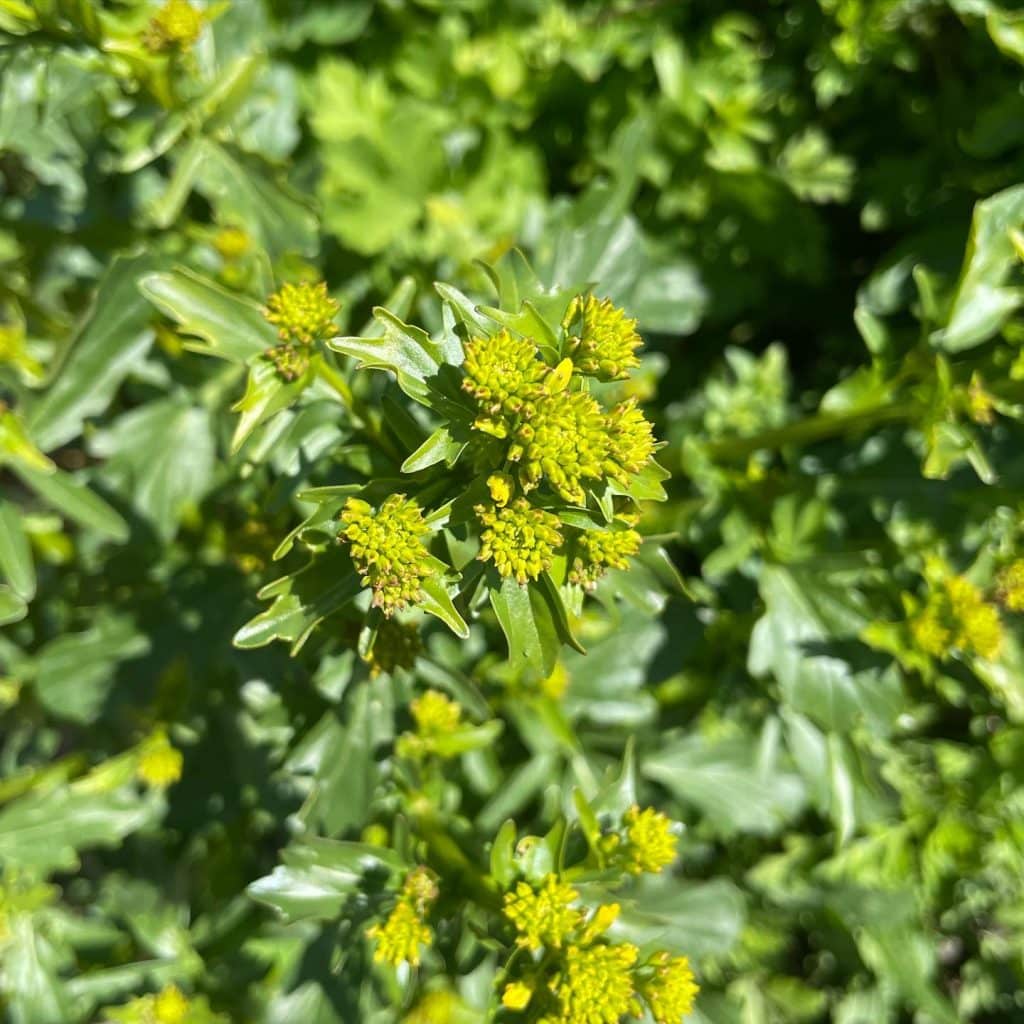
Wintercress (Barbarea vulgaris) is a non-native plant in the mustard family. Wintercress, also known as Yellow Rocket, can be found in fields, gardens, and disturbed soil in full sun. Wintercress produces a basal rosette of deeply lobed emerald green leaves. The leaves resemble arugula with larger, rounder lobes. The plant produces a hairless flower stem […]
Picea abies – Norway Spruce
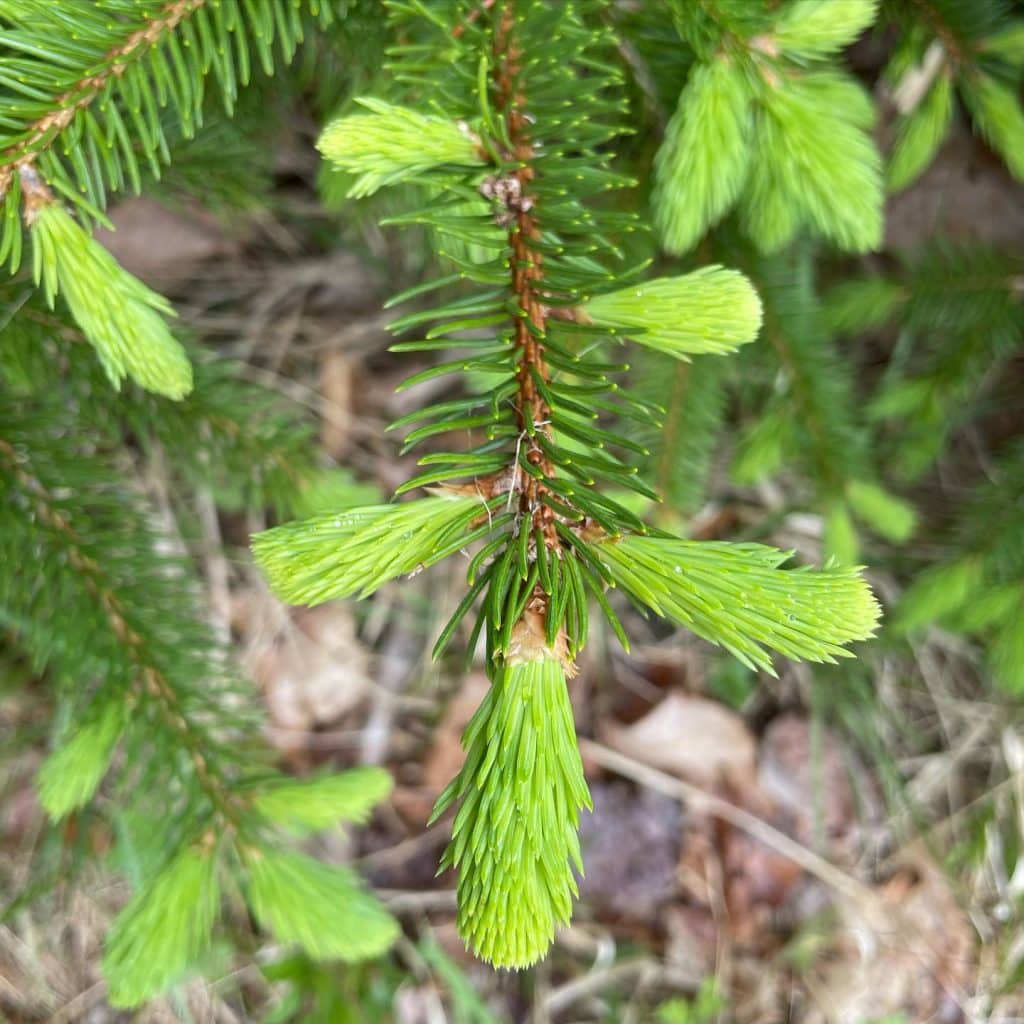
Norway Spruce (Picea abies) is a common spruce tree that came from Europe. Spruce trees have needles that have 4 sides. The needles of spruces are individually attached to the stem, unlike pine needles which are grouped in fascicles. All spruces produce edible tips. The flavor of spruce tips varies by species from being citrusy […]
Hesperis matronalis – Dames Rocket
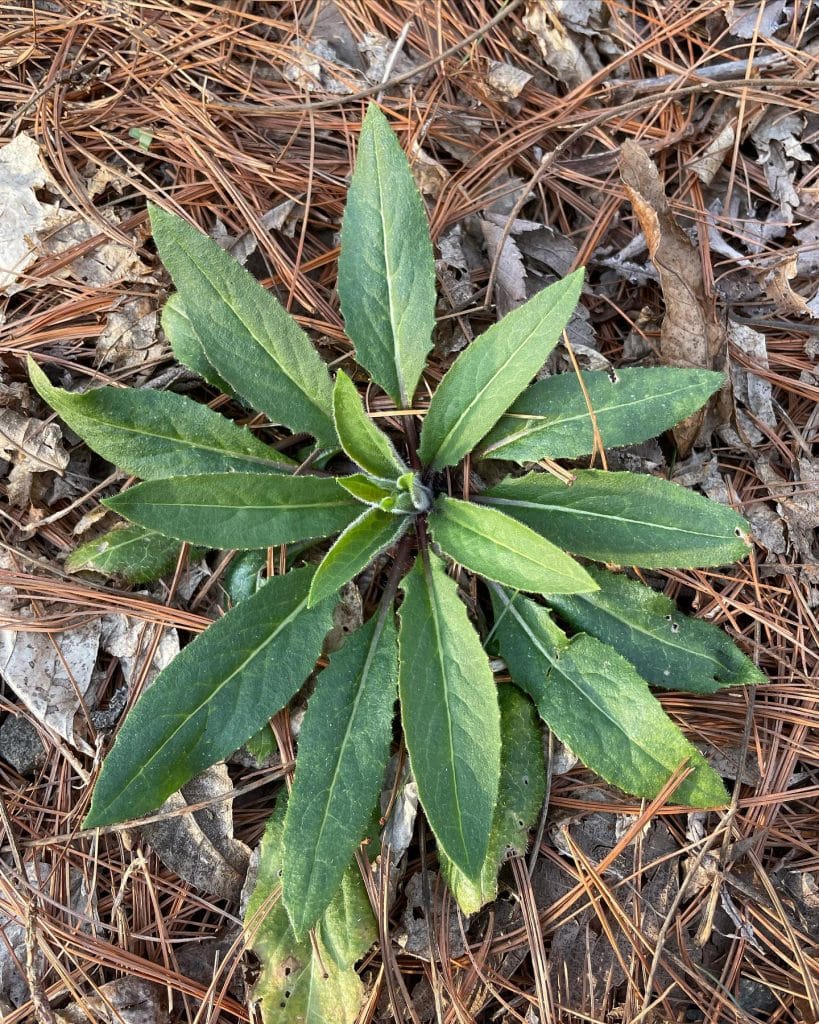
Dame’s Rocket (Hesperis matronalis) is an invasive, yet edible plant in the mustard family. In early spring, you can find the basal rosette of Dame’s rocket leaves in disturbed areas. The leaves are covered in small, fuzzy hairs and have irregularly toothed margins. Dame’s rocket leaves taste like peppery arugula. They are best foraged for […]
Claytonia virginica – Virginia Spring Beauty
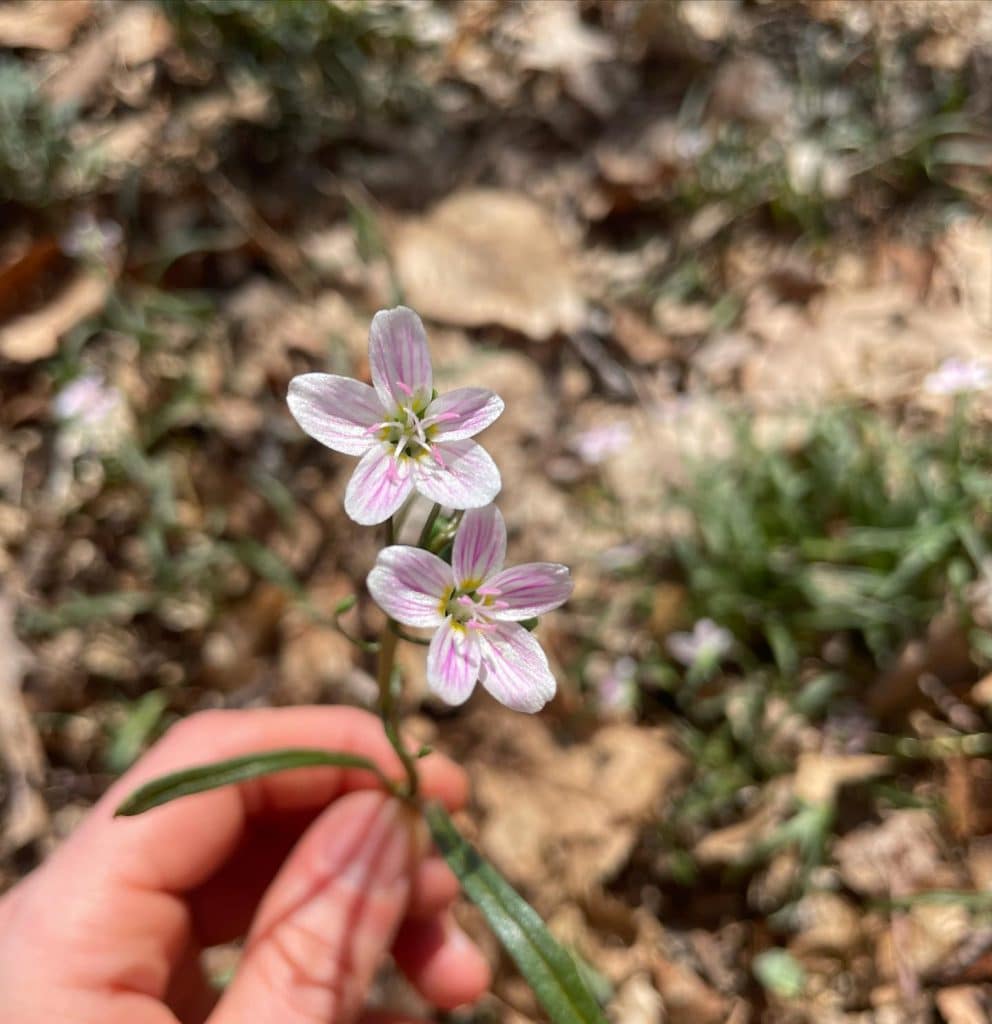
Virginia Spring Beauty (Claytonia virginica) is an edible ephemeral that likes to grow in dappled sunlight. The plant is often found near ramp patches, as both species like to grow in maple-hardwood forests. Virginia Spring Beauty has white to pink flowers with pink stripes. The flowers open when it is warm and sunny. They will […]
Uvularia sessilifolia – Wild Oats

Wild Oats (Uvularia sessilifolia) is a native woodland plant in the lily family. Wild Oats have alternate leaves that attach directly to the stem. In late April-early May the plant produces a yellow-cream colored flower. Wild Oat shoots can be eaten raw after the leaves are stripped away. Flowers can be added raw to salads. […]
Houstonia caerulea – Quaker Lady Bluet
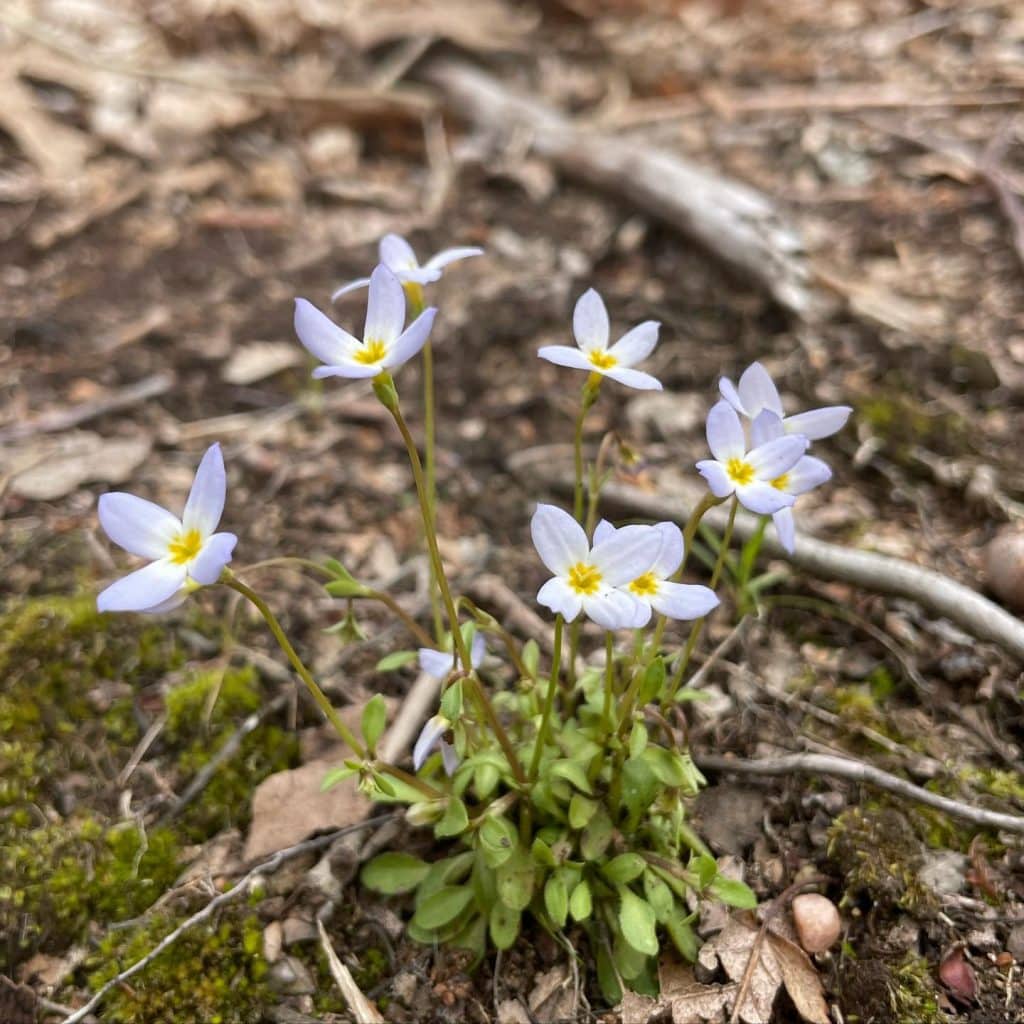
Quaker Lady Bluets (Houstonia caerulea) are native edible flowers that can be found blooming April-July. Quaker ladies can be distinguished from other bluets by the patch of yellow at their center. Quaker ladies are in the coffee family. They have a taste similar to alfalfa sprouts. An infusion of Quaker lady roots was used by […]
Cerioporus squamosus – Dryad’s Saddle
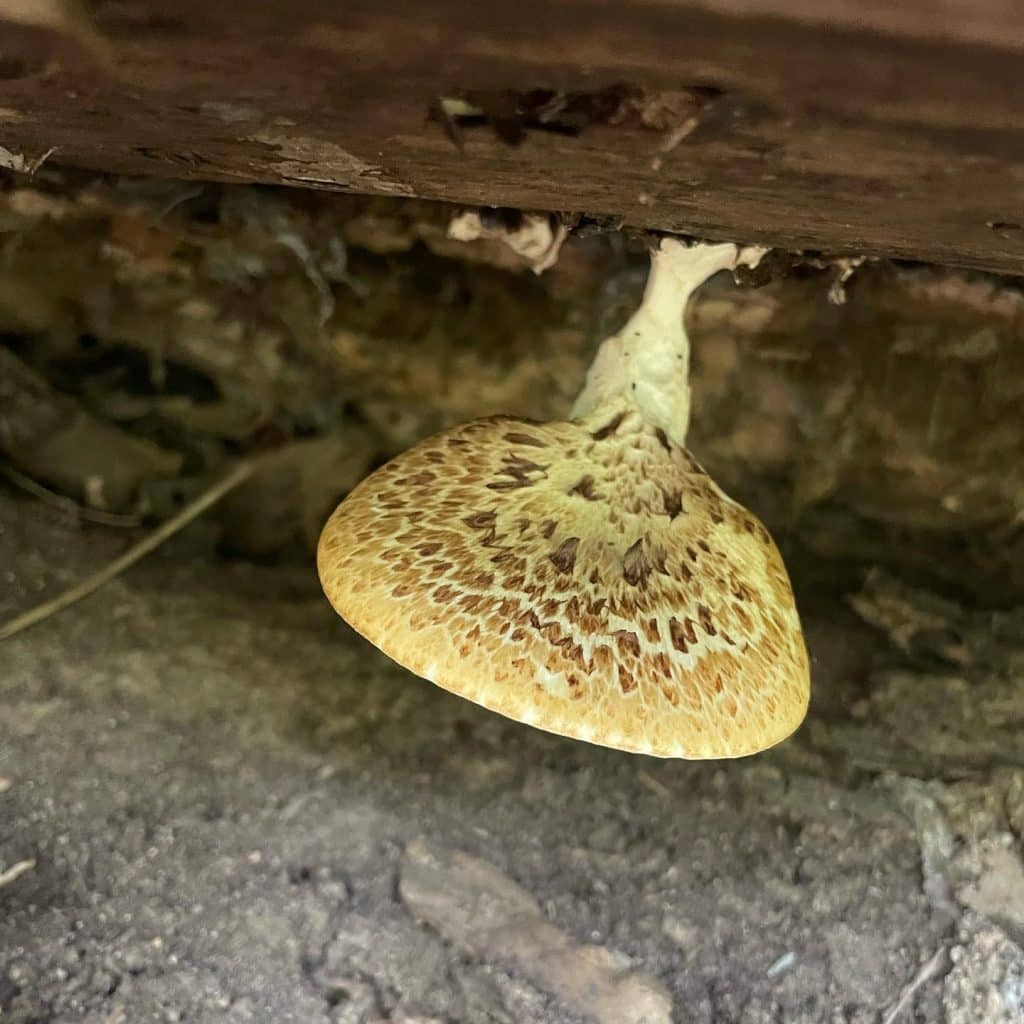
Dryad’s Saddle (Cerioporus squamosus) is a choice edible mushroom when found young. Dryad’s saddle, or Pheasant back, can be found in the spring and fall, fruiting on dead or dying hardwood trees. Look for the fungus 1-2 days after a heavy rain. The mushroom is parasitic, causing white rot disease to the tree. Dryad’s saddle […]
